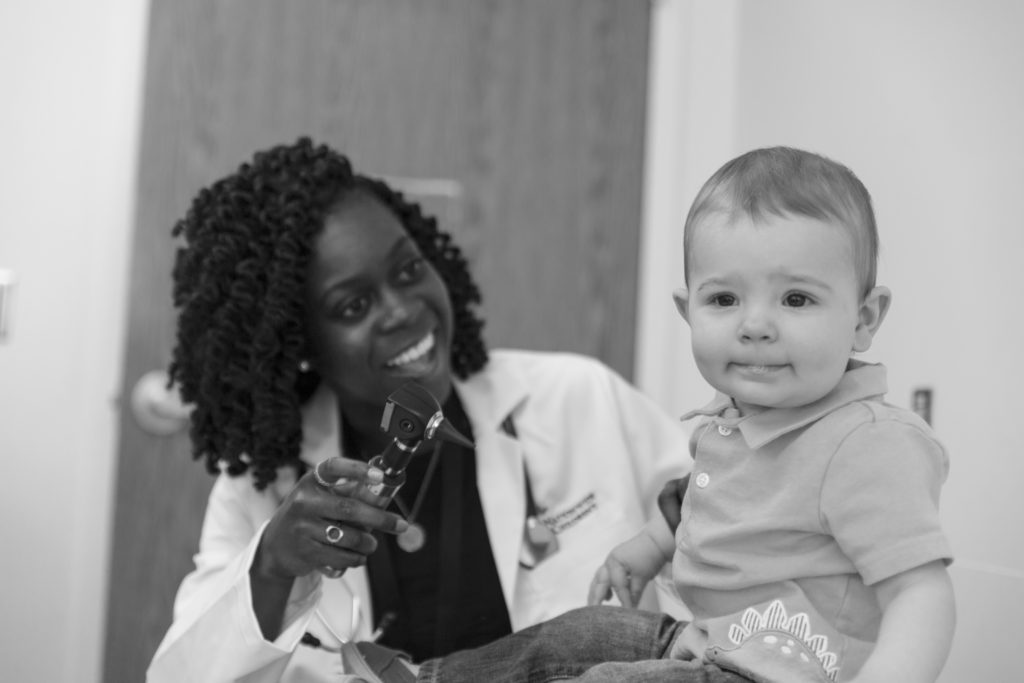The Success of an EMR-Based Health-Related Social Needs Screen in Pediatrics
The Success of an EMR-Based Health-Related Social Needs Screen in Pediatrics https://pediatricsnationwide.org/wp-content/uploads/2022/03/042016bs446-1-1024x683.jpg 1024 683 Deborah L. Ungerleider, MD, FAAP Deborah L. Ungerleider, MD, FAAP https://pediatricsnationwide.org/wp-content/uploads/2021/10/Deborah-Ungerleider-MD-photo.jpg- March 31, 2022
- Deborah L. Ungerleider, MD, FAAP

Standardized universal HRSN screening with an EMR system and follow-up by social work consults can be successful and contribute to reducing health disparities.
Health-related social needs (HRSNs), sometimes referred to as social determinants of health (SODH), are the risk factors of food insecurity, lack of stable housing and poverty, all of which can play a significant role in children’s health.1 Poverty has been shown to lead to substantial effects on educational attainment, employment later in life and increased risky behavior in adolescence and adulthood.2 Food insecurity has been demonstrated to have adverse effects on children’s health, including general health, more emergency room visits, anxiety and depression.3 Lack of stable housing has been shown to lead to an increased incidence of hospitalizations, poor overall health and developmental risk.4 Although HRSNs can affect all children, these risk factors tend to be higher in racial and ethnic minority populations, thereby contributing to continued health disparities between racial groups.1
Various screening methods and the importance of screening for these aspects have been studied, followed by referring children to resources to help overcome these HRSNs.1 Although the importance is well-known, there are no standardized methods for doing this and many providers are not performing this screening routinely in clinical practice.1
Millie Dolce, PhD, MSW, program evaluator analyst for wellness initiatives at Nationwide Children’s Hospital, and colleagues, investigated the implementation of an electronic medical record (EMR) based social needs screening in a recent study published in Pediatric Quality and Safety. The study, done using quality improvement methodology, aimed to improve screening compliance in primary care settings, specialty clinics, and urgent cares from 0% to 70% within 12 months and sustain the screening levels indefinitely.1
“Nationwide Children’s is already a leader in community and population health,” says Dr. Dolce. “We began this work to build on our existing programs and help connect more families with these programs.”
“Instituting a health system-wide HRSN screen requires commitment and engagement from multiple partners, ranging from hospital leadership to information technology to interpreter services,” the authors say. “This process included balancing complex and sometimes conflicting needs, such as valuing patient choice, integrating the screen into the EMR, not impeding clinic workflow, and appropriately alerting social work.”1
The authors first assessed the HRSN processes already in place both at Nationwide Children’s and at other institutions. They found that the screenings were inconsistent in terms of who was screened, how the screening was done and at which visits it was performed.1 Additionally, Dr. Dolce also says that “…the data were not shareable; integrating data into the EMR allows the entire clinic team to have access to the data.”
Following their assessment, they identified key components to improve compliance with screening. First, they created a universal and standardized method to identify HRSNs. They then administered the EMR-integrated screen once a year to all outpatients at Nationwide Children’s. Lastly, they connected patients and families with community resources to address general and urgent needs. Anyone with general needs was provided with a list of resources. Those with urgent needs were referred to a social worker.1
Urgent Needs
- No safe place to sleep
- Need for food
- Unable to get home
- Utilities shut off
General Needs
- Food insecurity
- Need for transportation to medical appointments or pharmacy
- Risk of being homeless
Screening Conducted
88.7% of participants were screened in Primary Care Clinics.
78.8% of participants were screened in outpatient specialty clinics.
70% screening threshold reached for all racial groups.
Social Needs Identified
9.7% had at least one need.
4.7% identified food insecurity.
4% needed transportation to medical appointments.
2.9% had urgent needs.
Response to Social Needs
85% of social work consultations were completed within 7 days.
55.7% of respondents had resources provided.
3.1% received a referral.
In addition, based on the results of this study, Nationwide Children’s has hired a community health worker at one of the highest need primary care clinics, according to Dr. Dolce. The community health worker responds to both urgent and general needs and works personally with each family.
“This screen is just one part of the larger effort that the organization is making around social determinants of health,” says Dr. Dolce. “How can we optimize the screening and referral process so that we can move the needle? That requires other larger hospitals who may be doing this to set some benchmarking goals and collect baseline data on the larger community metrics. If we can improve patients’ housing, nutrition and utilities, will we see increased high school graduation rates, improve kindergarten readiness and have a workforce making a livable wage?”
References
- Dolce M, Keedy H, Chavez L, et al. Implementing an EMR-based health-related social needs screen in a pediatric hospital system. Pediatric Quality and Safety. 2022 Jan;7(1):e512.
- A roadmap to reducing child poverty: report highlights. National Academy of Science EaM. The National Academies. 2019. Accessed February 12, 2022. https://www.nap.edu/child-poverty/highlights.html
- Thomas MMC, Miller DP, Morrissey TW. Food insecurity and child health. Pediatrics. 2019 Oct;144(4):e20190397.
- Sandel M, Sheward R, Ettinger de Cuba S, et al. Unstable housing and caregiver and child health in renter families. Pediatrics. 2018 Feb;141(2):e20172199.
Image credit: Nationwide Children’s
About the author
Deborah Ungerleider, MD, FAAP, earned her medical degree from the University of Medicine and Dentistry of New Jersey (UMDNJ)/Rutgers Medical School in Piscataway, NJ in 1985, following earning a BA in biology at Barnard College/Columbia University. She went on to complete a pediatric residency and chief residency at New York University Medical Center/Bellevue Hospital. She is an experienced pediatrician with more than 30 years of working in private pediatric offices and being on staff at several community hospitals. She is board-certified in Pediatrics and is a fellow of the American Academy of Pediatrics.
Her medical writing and editing experience has included writing educational articles for her patients, in addition to editing medical journal articles for various specialty journals. Dr. Ungerleider now works as a freelance medical writer and editor, using her medical expertise, as well as her organizational and writing skills to assist clients with medical communication projects directed at both clinicians and lay audiences.
-
Deborah L. Ungerleider, MD, FAAPhttps://pediatricsnationwide.org/author/deborah-l-ungerleider-md-faap/October 21, 2021
-
Deborah L. Ungerleider, MD, FAAPhttps://pediatricsnationwide.org/author/deborah-l-ungerleider-md-faap/
-
Deborah L. Ungerleider, MD, FAAPhttps://pediatricsnationwide.org/author/deborah-l-ungerleider-md-faap/
- Posted In:
- Clinical Updates
- In Brief
- Research









